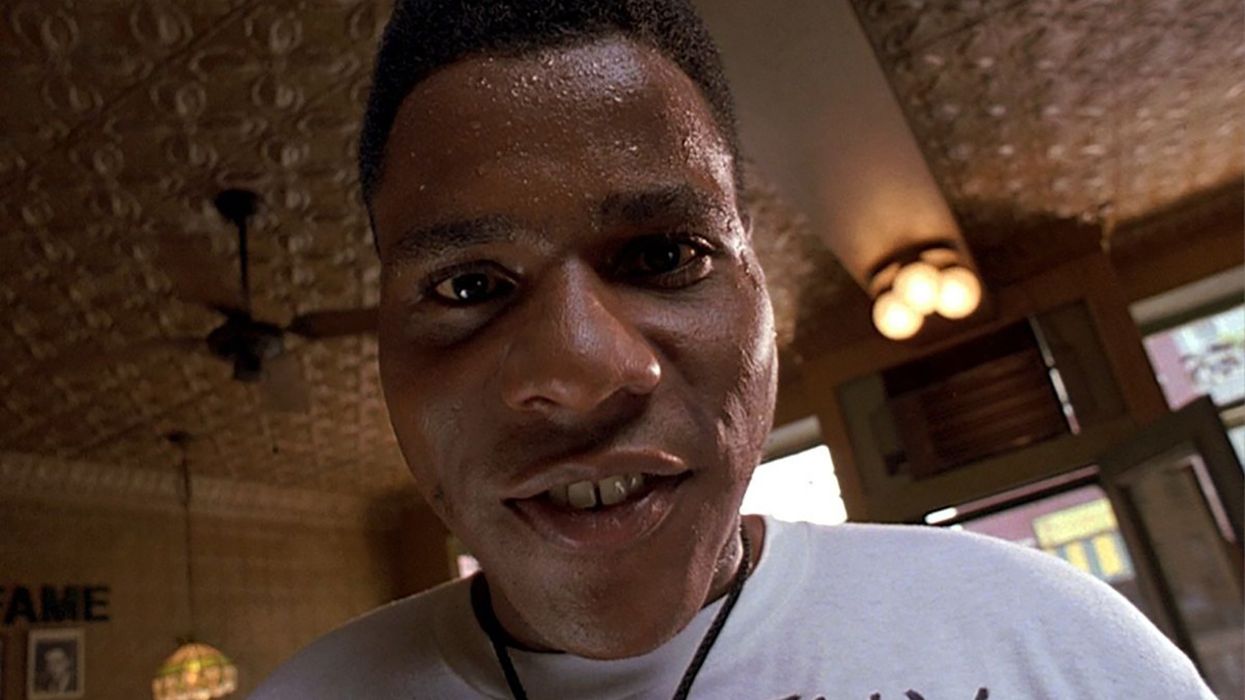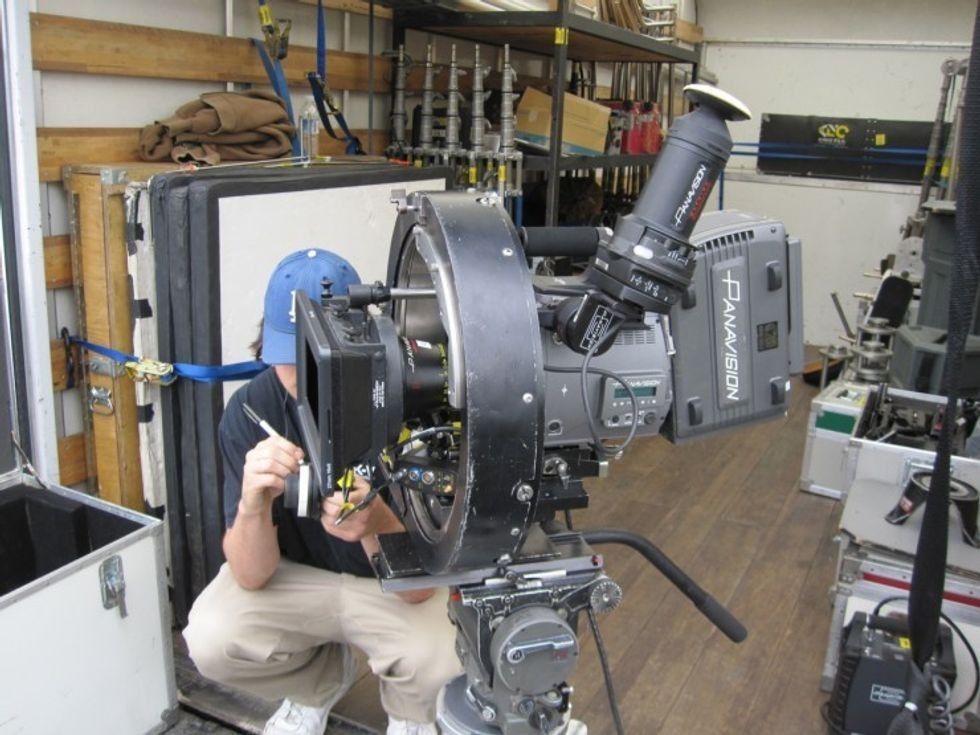What is the 'Dutch Angle’ (Definition & Examples)
Do you know what the dutch angle is in cinematography?

Have you ever seen a camera angle that makes you feel a little uneasy? Chances are, it was probably a canted angle, or Dutch angle. These are common types of camera angles that try to skew the audience's perception and the narrative.
Today we're going to go over the Dutch angle. We'll learn the definition, look at some examples, and dintontop how you can shoot Dutch angles at home?
Sound good? Let's go!
What is the 'Dutch Angle’ (Definition & Examples)
I believe it was the great Roger Deakins who once said, the best cinematography doesn't stand out, it just fits within the movie you’re watching. When we think about camera angles, we usually analyze what comes standard. Close, medium, wide. But what if you want to use a camera angle that truly stands out from the crowd?
But first...what is a Dutch angle?
Dutch Angle Definition
The definition is a canted angle that gives the audience a viewpoint that comes at a tilt. The desired effect of a Dutch angle, or Dutch tilt, is as if the viewer tilts their head to one side of the other.
Basically, the angle allows the camera to roll on its axis to so the horizon is not parallel with the bottom of the frame.

"A special axis head allows for cinematographers to set up Dutch angles."
via Wikipedia
Why Is It Called A Dutch Angle?
The angle came from the German expressionist film movement. There was an actual naval blockade, that prevented German movies made around the First World War from being exported. So after the war ended, the rest of the world got to see the newest developments in German film, or Deutsch film.
Somewhere along the way, Deutsch became Dutch.
This was one of the top ten moments that actually changed modern cinema history.
Why Use A Dutch Angle?
There are lots of valid reasons to use a the angle. In general, most filmmakers use the the camera angle to evoke tension or a psychological meltdown for the characters.
The canted camera angle's history
German expressionism lasted from 1910 to around 1930, when most of the world picked up on the cinematic techniques started in Germany.
The Dutch angle then began to pop up all over American cinema. Most notably, the movie The Third Man used them to help accentuate the film noir tendencies. The Dutch tilts in this movie keep the audience on edge and was the first exposure many Americans had to this camera technique.
Even in recent history, Brian De Palma used these tilts to accentuate the tension in this scene from Mission Impossible.
This is a great Dutch angle example, but let's look at a few others to try to learn how the angle has been utilized throughout the ages, and how you can use the camera angle in your own work.
Dutch Angle Examples
As we mentioned above, Dutch angles became sort of a signature for cinematographers and directors trying to set an uneasy mood. The tilt was also a great way to communicate impending doom.
Take a look at how Quentin Tarantino uses the camera angle sporadically in this clip from Inglorious Basterds.
See how we change to the angle when we shift perspectives from the Bear Jew to the Nazi, and back and forth? We know there is something terrible about to happen, and this subtle camera tilt helps raise the stakes even further and makes great writing even better.
Speaking of impending doom, what about the card-counting scene from Casino?
Scorsese uses the angle here to let us know this is going to hurt...we get the subversion of power here too. The way the camera tilts lets us know the man pinned down has a ton of weight on his back. And he's going to lose his hand because of it.
How about using a angle to thematically frame a character?
I love the Guy Ritchie movie, Snatch. I think it does so many things right when it introduces its hapless criminals and larger than life characters. One of my favorites is Boris the Bullet-dodger. And in this film, in almost every scene with Boris, we’re getting him with a tilt.
This camera angle almost always makes the audience uneasy when Boris is on the screen. It feels weird, just like him, and means almost anything can happen.
One thing to keep in mind is how obvious the angle looks when it appears on the screen. If you use it too much, people may just get confused. So let’s talk a bit about some angle overuse.
Dutch angle overuse is a real thing
You want the writing and acting to carry the story, so now one thing the director and cinematographer are being way too overbearing with mood swings. If you overuse of the angle, people are going to notice.
During Thor, I can remember being a little confounded in the movie theater. I knew we were supposed to be in a fantastical realm, but it felt like every time they wanted a mood shift...they went Dutch.
Danny "Dutch" Boyle
This ended up taking the tension away and making for a few confusing fighting scenes.
Let’s also talk about the angles overuse in Danny Boyle films. And how it became his strength. I love Danny Boyle. Millions makes me cry just thinking about it. And I legit haven’t hiked since seeing 127 Hours.
He frequently uses it to keep the audience engaged during talking scenes and to find new ways in and out of coverage. You could probably call this angle overuse, but it has clearly become part of what makes him such a special auteur filmmaker.
So you see, these angles are great tools. They can even be a tool that makes you stand out from the crowd, but you have to walk a fine line when using them.
Or a fine axis.
Last camera pun, I swear.
Summing Up The Dutch Angle
So if you want to show a character’s uneasiness, or just put the audience on edge to raise the tension, perhaps try this camera angle.
Remember, these camera tricks are best used sparingly. Harken back to the Roger Deakins quote and make sure your camera angles fit within the world you’ve created. This was fun, and the start of a whole new camera angle series. And we’re excited to have you along for the journey.
Got a favorite use of the angle?
Leave a link in the comments!
Canted wait to see what you have for us…
(Sorry for the pun, till next time!)










![Ethos, Pathos, Logos: 20 Effective Ways to Advertise [Infographic]](https://nofilmschool.com/media-library/ethos-pathos-logos-20-effective-ways-to-advertise-infographic.jpg?id=34064614&width=600&height=600&quality=90&coordinates=560%2C0%2C0%2C0)

